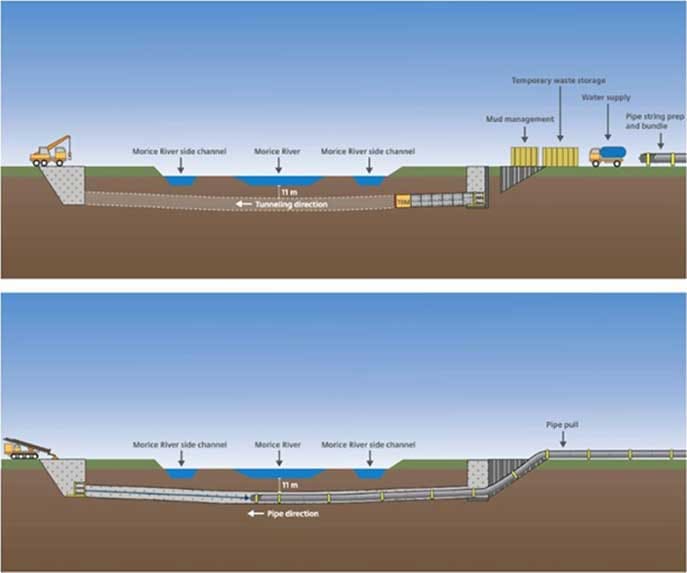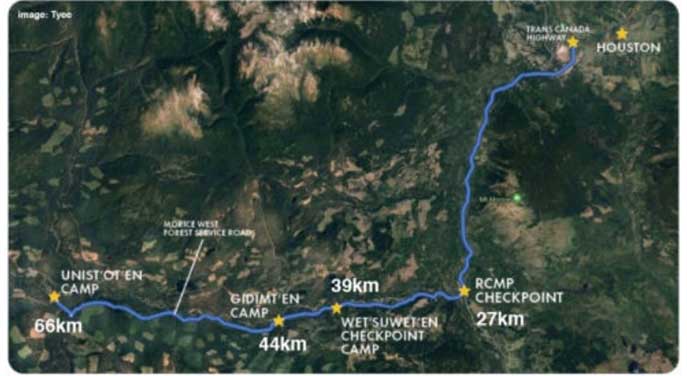 American actor Mark Ruffalo took another uninformed swipe at the Coastal GasLink pipeline this week, claiming via Twitter that “the cleanest river in North America is about to be sacrificed to the oil and gas industry” because of project construction.
American actor Mark Ruffalo took another uninformed swipe at the Coastal GasLink pipeline this week, claiming via Twitter that “the cleanest river in North America is about to be sacrificed to the oil and gas industry” because of project construction.
Earlier this year, Ruffalo joined other celebrities to demand that RBC cease funding Coastal GasLink, saying it is “disregarding the rights of Indigenous peoples.”
Ruffalo is wrong about the project’s environmental impact. His misleading statements also ignore its broad support by Indigenous communities and threaten their future prosperity.
Builders of the 670-km natural gas pipeline from northeast B.C. to the LNG Canada terminal at Kitimat have started work to “micro-tunnel” under the Morice River, known as Wedzin Kwa to local First Nations, about three-quarters of the way down the route.
Here are the facts.
Fact: ‘Micro-tunneling’ will not harm the river
B.C.’s First Nations LNG Alliance (FNLG) says it understands concerns about maintaining river quality, but construction will use safely proven technology. This is primarily because the pipeline will be a full 11 metres beneath the riverbed, the height of a standard telephone pole.
“The Morice River (Wedzin Kwa to the Wet’suwet’en people) is indeed a salmon river. It supports chinook, pink, coho and sockeye salmon, steelhead and trout. Concern expressed — and understood,” FLNG said in a statement.
“But the advanced ‘micro-tunnelling’ technique proposed by Coastal GasLink under Wedzin Kwa is a proven method of using a remote-controlled tunnel-boring machine, and then hydraulic jacks to push concrete casing segments through the tunnel deep under water bodies. The pipeline is then safely pulled through the tunnel created by the concrete casing.”

Trenchless crossings, like the micro-tunnelling shown above, allow the pipeline to be installed under the body of water
B.C.’s Environmental Assessment Office found that Coastal GasLink’s pipeline route, watercourse crossing methods and locations “have taken into consideration the sensitivity of fish habitat and fish species” and can effectively protect fish and fish habitat.
Fact: The river is not untouched by development
Ruffalo and other activists against Coastal GasLink claim that the Morice River is pristine and untouched by development. This is untrue.
It is clear in photos of the area that it is heavily impacted by the forestry industry. The entire area is crisscrossed by logging roads and areas that have been clear-cut. The forestry industry accesses the area on gravel roads cut into the valley with bridges that cross the river.

Image courtesy unistoten.camp
In fact, there has been commercial forestry in the region since the 1920s, and Canadian Forest Products is the area’s largest employer, according to the District of Houston.
“As for the claim that the river is the cleanest in the world, that is simply mindless hyperbole,” says B.C. environmental scientist Blair King.
“There has never been a study to establish which river is the ‘cleanest.’ There are rivers in pristine valleys all over the country that could be cleaner.”
Fact: Indigenous communities benefit from Coastal GasLink
For a decade, dozens of First Nations have been tirelessly preparing to be part of Canada’s LNG industry, according to B.C. Indigenous business leader Chris Sankey.
“We are now global players, sitting at the boardroom table as partners,” Sankey wrote recently.
Coastal GasLink is a key enabler of this shared prosperity.
Not only will it connect to the LNG Canada terminal on the traditional lands of the Haisla Nation – where the project has been transformational for the community, according to Chief Councillor Crystal Smith – but it will also provide natural gas for the proposed Cedar LNG project, in which the Haisla Nation is 50 per cent owner.
Sixteen First Nations will become 10 per cent owners of Coastal GasLink itself once it is completed. And so far, LNG Canada and Coastal GasLink together have spent more than $4.3 billion with Indigenous-owned and local businesses.
“When there is foreign interference, especially from high-profile celebrities like Ruffalo, it sets us back. He does not think beyond the pipeline. He does not think beyond the cause of the day,” writes Indigenous policy analyst Melissa Mbarki.
“Over the long term, such actions serve to drive away investment and keep Indigenous communities in poverty. We are dealing with so many social issues, including high rates of suicide, incarceration and homelessness. Speaking on our behalf is not the answer if you fail to acknowledge the entire story.”
Fact: Coastal GasLink will help reduce global emissions
By feeding LNG Canada (and Cedar LNG), Coastal GasLink will help lower world emissions by reducing reliance on coal.
Natural gas generates about half the emissions of coal power, according to the International Energy Agency (IEA). And researchers have found that LNG from Canada can do even better, reducing emissions by up to 62 per cent compared to coal.
According to Global Energy Monitor, there are now 2,439 coal-fired power plants operating worldwide. Another 187 are under construction, and a further 292 are in “pre-construction” or planned for the near future.
“Global electricity generation from coal this year will be the highest ever in history,” IEA executive director Fatih Birol said at the virtual launch of the agency’s latest report on the state of global coal.
He called it “a sobering reality check” for targets to reduce emissions.
LNG – and in particular, reliable, low emissions LNG from Canada – is part of the solution. Celebrities like Ruffalo should not stand in its way.
Deborah Jaremko is director of content for the Canadian Energy Centre, an Alberta government corporation funded in part by taxes paid by industry on carbon emissions.
For interview requests, click here.
The opinions expressed by our columnists and contributors are theirs alone and do not inherently or expressly reflect the views of our publication.
© Troy Media
Troy Media is an editorial content provider to media outlets and its own hosted community news outlets across Canada.


